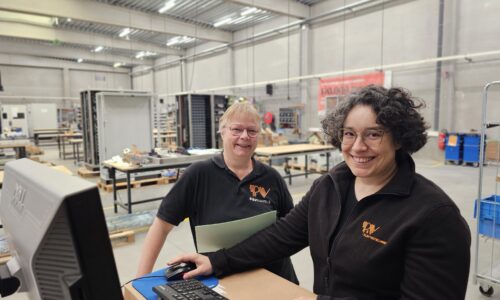Do you have a question?
If it is about control panels, we have the answer.
Smart Panels: THE ADVANTAGES IN A NUTSHELL
Smart panels is a commonly heard term. But what makes an electrical panel smart? And, more importantly, what are the advantages of the technology for your company? Project Manager Chris Rasschaert explains.
“A smart panel is an electrical panel with the intelligence to measure and connect. There is intelligence in the form of sensors and energy meters to name just two. You then know what is happening in the panel and you can make all the data visible. You can do this on-site by connecting your laptop, or remotely using an IP address.”
“The opportunities are enormous. To further clarify the advantages, let me talk about a number of sectors. Our clients in industry, for example, are often interested in opportunities to save money. They want to know where the energy-guzzlers are in their production facilities. A smart panel makes this visible, while also monitoring the quality of the current.”
“For the offshore world, the connectability of smart panels is important. Considering the fact that drilling platforms are often unmanned, it is useful to be able to monitor the situation remotely. Has something tripped? You receive a message – right up to the level of the specific switch. Then your repair team does not have to spend unnecessary time looking for the fault. Technology now enables us to even take action remotely.”
“But it is important to think beyond the immediate opportunities of smart panels. What do I mean by that? Our service department always emphasizes the advantages of preventive maintenance. Their message is ‘Do not wait until your electrical installation fails, but act in good time’.” Smart panels can play an important role in this. Having the right data makes it easier to assess situations and take proactive action. Opting for smart solutions also has to do with how your company sees maintenance in the future.”
24/7 THERMOGRAPHY
“Finally, an example that outlines the technical possibilities and the future smart way of working on maintenance. We are currently experimenting with temperature sensors that enable 24/7 thermography in our panels. Nowadays, thermography takes place once a year to detect heat losses at best.”
“We fit the sensors in different places in our panel. But this is always on a conductor because that is where they take their power and 5A is already plenty. The sensors then pass on their data wirelessly. We monitor whether the cable is correctly connected. If it becomes detached, there will be heat loss. The data is then sent wirelessly from IP address to IP address. That is yet another possibility of a smart panel.”


